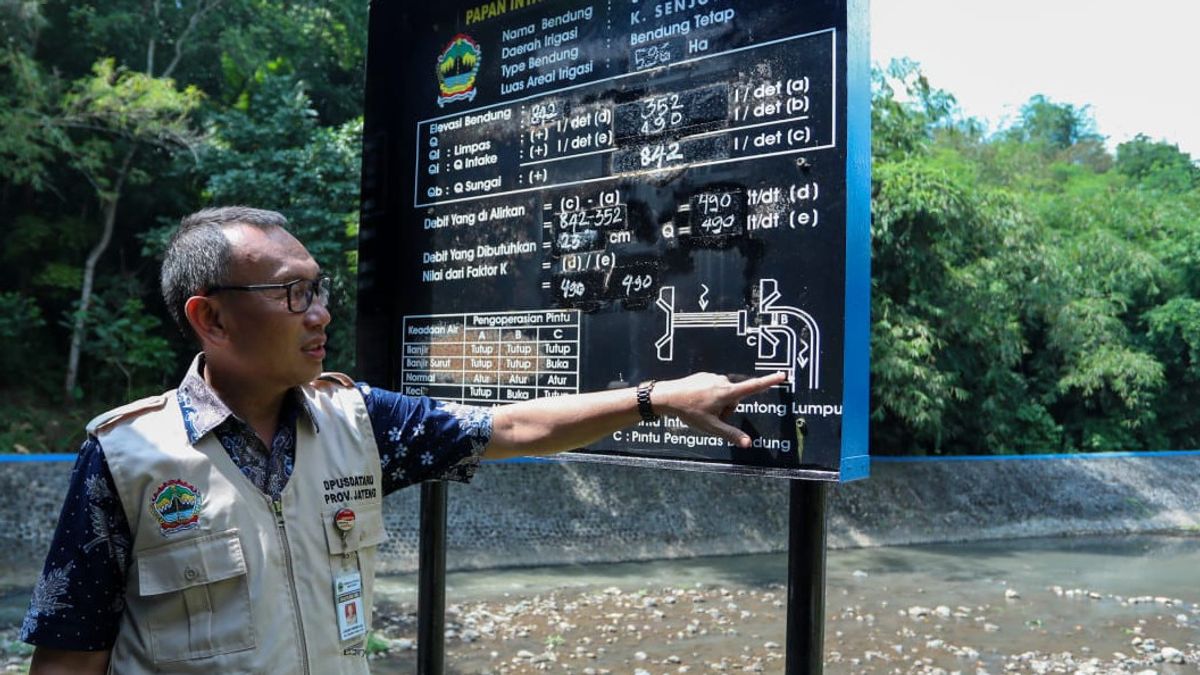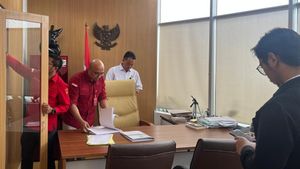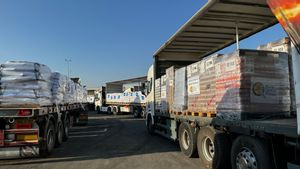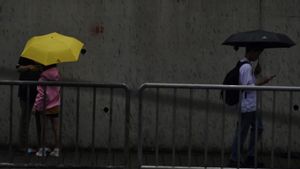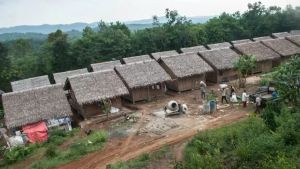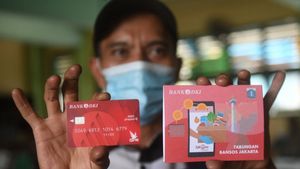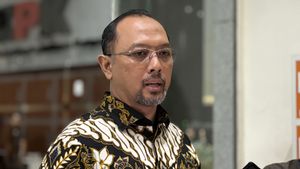JAKARTA - Central Java Governor Ganjar Pranowo continues to intensify irrigation development in his area. It was noted that there were about 108 Irrigated Areas (DI) with good conditions, so that most of the farmers' rice fields received water adequacy.
The Head of the Central Java Water Resources and Spatial Planning Public Works (Pusdaru), Eko Yunianto, said that according to his authority, the Central Java Provincial Government covered 108 DI which irrigated the majority land in Central Java. The total area of agricultural land is 1.70 million Ha.
"The condition in 2013 until 2023 (the leadership period of the Governor of Central Java Ganjar) we are talking about data. Conditions in 2013 the physical condition of our irrigation network is 72 percent in good condition. Our data at the end of 2021 has increased, performance is good or conditioned to 82.60 percent. So the increase is 10. 60 percent during the 2013-2021 period," said Eko in his statement, Tuesday, August 30.
According to him, this shows the provincial government's ongoing efforts in responding to conditions in the field by implementing the policies that have been set, namely Operations and Maintenance of irrigation networks, Optimization of irrigation networks, and rehabilitation of irrigation networks (OPOR).
The provincial government is also trying to maintain the function of irrigation services to date. With its representation is to maintain, care for and maintain irrigation networks. So it is not surprising that irrigation conditions currently reach 82.60 percent.
His party said that the irrigation area under the authority of the provincial government reached 108 irrigation areas. With details consisting of 142 dams, 305.42 km of main channels, the secondary canals are 2,044.68 km, 2,489 water buildings, and 6,581 complementary buildings.
There are also various other complementary buildings. For example, water buildings in the form of buildings for tapping, tapping buildings, and other complementary buildings, which are technically needed in irrigation networks.
He explained, in general, the irrigation function in Central Java is to raise certain water faces to serve the highest irrigation area. With the intention of bringing water from a river that is captured through a dam, then channeled through the main channel, secondary channel, tertiary and quarterlist to get to the farmer's rice fields.
"The main function is how to guarantee water to farmers, starting from the river into an irrigation net system to serve the irrigation area of our farmers," he explained.
From the calculation through an estimated land ownership approach of a quarter hectares per 1 family, it was recorded that around 347,500 families or farmers could be helped with the land.
"You can imagine how the role of the Central Java Provincial Government is very strategic so that the resilience of the agricultural sector in a broad sense is maintained in supporting efforts, both food security and food sovereignty," he said.
One of the irrigation areas that was monitored was in good condition other than DI. Sucen Salatiga, also DI. The echo in Kudus Regency. It was recorded in the Water Resources Management Center (BPSDA) Serang Lusi Juana (Seruna) of the Central Java Pusdaru Service, that he was in good condition.
Head of BPSDA Seluna Agus Purwanto assessed that DI's condition was in good condition, and until now he is able to serve 2,821 Ha which extends in Jekulo and Mejobo sub-districts.
In irrigating the land, there is a network of 4.8 km of parent canals, 19.5 km of secondary, as well as the presence of a west and eastern parent. Because DI. The echo is maintained, there are thousands of farmers who receive the benefits of irrigation water.
"Alhamdulillah, all this time even though the dry season is like this, water is always available. The availability of our water is always fulfilled. Indeed, we have reservoirs (Lagung Reservoir). The reservoirs in terms of water supply are excessive," he explained.
Farmers from Ganjar Village, Pabelan District, Semarang Regency, Kudarso, admitted that in the era of Ganjar's leadership, irrigation was well and orderly. So it is possible that farmers can plant rice up to three times a year with the harvest being able to improve their family's economy.
"The impact (of the irrigation regulations for the Ganjar era) has been felt recently. In the past, the building at that time was often leaked. With this government, now it can be controlled," said Kudarso.
The Chairperson of the Water Farmers Association (IP3A) Logung Tirta Jaya Kudus Suwandi, during the time of Governor Ganjar Pranowo, there were no cases of water fighting in his area.
"The results of rice production can now reach 8 tons. In the past, it was 4.5.6 tons. I thank Pak Ganjar. I as chairman of IP3A oversee farmers around 5 thousand and above," he explained.
The English, Chinese, Japanese, Arabic, and French versions are automatically generated by the AI. So there may still be inaccuracies in translating, please always see Indonesian as our main language. (system supported by DigitalSiber.id)
